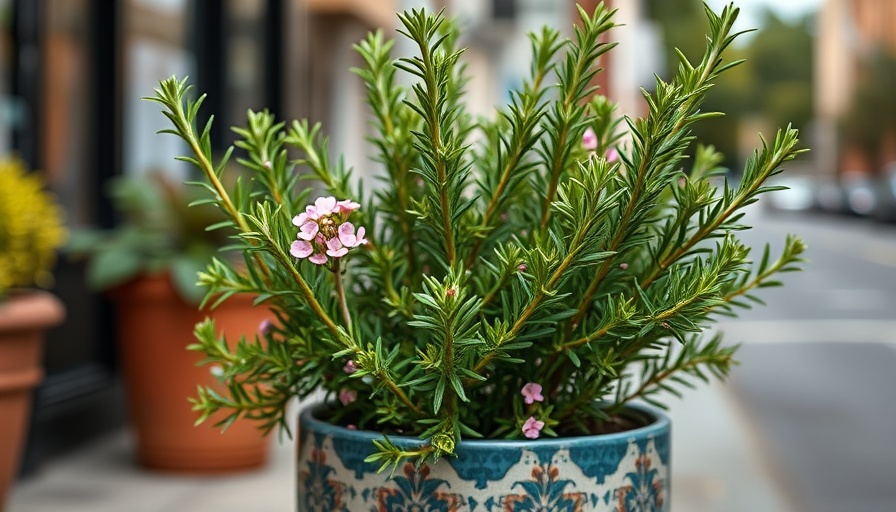
Why Grow Rosemary in Pots? Discover the Joy of Container Gardening
Growing rosemary (Salvia rosmarinus) in pots is an accessible and rewarding option for both seasoned gardeners and budding green thumbs. With its fragrant needle-like leaves and vibrant blooms, rosemary not only spices up your culinary endeavors but also brings beauty to your home environment. This herb is well-suited for a container garden, especially if you live in regions where outdoor winter survival is a concern.
Imagine having fresh rosemary at your fingertips—whether for enhancing roasted vegetables or for a fragrant tea. Container gardening also allows those with limited outdoor space to engage in gardening and enjoy the therapeutic nature of caring for plants.
Choosing the Ideal Container for Rosemary
While rosemary is a sturdy plant, the right container is crucial to its growth. The ideal pot should be at least 6 to 8 inches wide and deep, giving the roots ample room to spread. Opt for terracotta or ceramic pots which allow for better air circulation and drainage. To prevent water from pooling, ensure your container has proper drainage holes. Using a drainage tray underneath can be beneficial if you’re placing your pots on patios or porches.
This is particularly important since rosemary can quickly decline when its roots become waterlogged. Letting the soil dry out between watering ensures the plant thrives and contributes to better flavor!
Planting and Care Tips for a Flourishing Rosemary
When planting rosemary, start with well-draining soil. A potting mix amended with sand can mimic its native rocky habitat while ensuring drainage. Young plants are relatively easy to care for. Ensure they receive plenty of sunlight; ideally, 6 to 8 hours a day. Rotate the pot occasionally so all sides of the plant get an equal amount of light. Water when the top inch of soil feels dry, but avoid overwatering to prevent root rot.
Fertilizing rosemary isn't a necessity—over-fertilization can lead to a loss of flavor. However, if you wish to give your plants a boost, use an organic fertilizer in moderation during the growing season.
Winter Care: Keeping Your Rosemary Safe
For those growing rosemary in colder climates, protecting your container plants during winter is crucial. If you’re in a cold zone, moving your pots indoors when temperatures drop helps safeguard against frost. Place them in a sunny window where they can still soak up light.
Alternatively, you can bury the pots in mulch or peat in the garden during the winter months to offer some insulation while keeping the roots sufficiently cool.
Companion Plants: Elevate Your Container Garden
Looking to optimize your gardening space even further? Consider companion planting! Herbs such as basil and thyme complement rosemary well, enhancing flavors while helping to deter pests. Additionally, beautiful flowering plants like marigolds can attract beneficial pollinators while also offering an aesthetic appeal to your container garden.
Frequently Asked Questions on Growing Rosemary in Containers
What is the best time to plant rosemary? Ideally, plant your rosemary outdoors in the spring after the last frost. If indoors, you can plant year-round.
How do I know my rosemary needs watering? If the topsoil feels dry to the touch, it’s time to water; rosemary prefers to be on the drier side once established.
Conclusion: Embrace Your Green Thumb
Growing rosemary in pots is not simply about flavoring meals; it's about creating an inviting space filled with life and lush greenery. The satisfaction of nurturing such an aromatic herb can enrich your culinary adventures and daily life significantly. Embrace your green thumb, whether you have a sprawling backyard or a cozy porch, and let rosemary flourish in your personal garden sanctuary!
 Add Row
Add Row  Add
Add 




Write A Comment